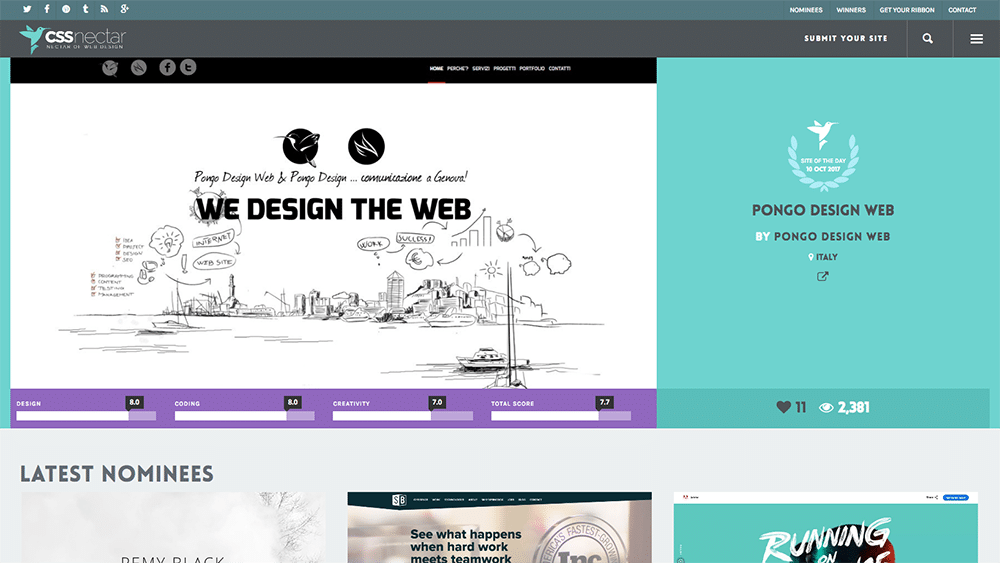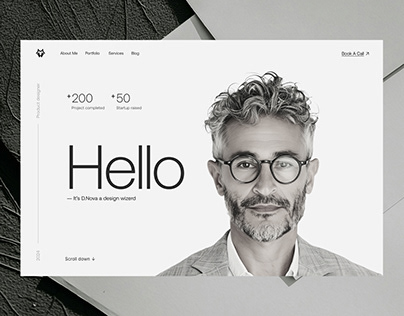Why Website Design Matters for Building a Strong Online Brand
Modern Internet Site Layout That Catches Focus and Transforms
In a significantly electronic landscape, modern internet site design has become a critical factor in catching individual attention and driving conversions. By tactically employing aesthetic pecking order, responsive formats, and engaging interactive aspects, developers can produce experiences that not only draw in visitors yet also promote significant communications. Additionally, efficient call-to-action strategies play an essential duty in guiding customers toward wanted outcomes. As we check out these necessary components, it ends up being clear that understanding their interplay can substantially impact a web site's efficiency and customer complete satisfaction. What are the crucial elements that absolutely make a difference?
Relevance of Visual Pecking Order
Aesthetic pecking order is an essential element in website style, as it guides users' focus and improves their overall experience. By strategically organizing web content, developers can guide users to the most important details first, thus enhancing engagement and boosting functionality. Effective visual power structure utilizes numerous techniques, consisting of size, comparison, spacing, and shade. Larger aspects naturally attract the eye, while contrasting colors can stress crucial messages, making them attract attention among even more restrained parts.
Incorporating a logical flow in web content arrangement is essential; for example, positioning one of the most crucial details at the top of a page promotes prompt acknowledgment. Consistent use of typography, such as varying font sizes and designs, aids establish a clear material framework. This organization not just help in navigation however also builds trust fund, as users feel much more comfortable when they can easily locate what they are looking for.
Ultimately, a well-executed aesthetic hierarchy not just boosts visual appeal yet likewise dramatically impacts individual actions. By prioritizing crucial elements and ensuring a seamless experience, designers can efficiently convert visitors into clients, enhancing the relevance of this fundamental design principle in modern site development.
Responsive Design for All Tools
Creating a smooth experience throughout different gadgets is necessary in today's electronic landscape, where individuals gain access to sites from desktops, smartphones, and tablet computers alike. Responsive style is a critical technique that ensures internet sites adjust fluidly to different screen resolutions, orientations, and dimensions. By using versatile grids, images, and CSS media inquiries, designers can create designs that maintain aesthetic honesty and capability, despite the tool being utilized.
The importance of responsive layout prolongs past aesthetic appeals; it straight influences user involvement and conversion rates. A website that works well on all devices urges longer gos to and lowers bounce rates, as users are more probable to connect with content that is simple to navigate. Search engines, especially Google, focus on mobile-friendly websites in their positions, making responsive layout an important part of search engine optimization (SEARCH ENGINE OPTIMIZATION)
Integrating receptive layout not only improves customer experience however also enhances the growth procedure. By developing a single site that works throughout devices, organizations can conserve time and sources compared to developing separate mobile and desktop computer variations. Inevitably, receptive layout is an essential strategy for contemporary site style, making certain ease of access and complete satisfaction for all customers, despite their gadget.
Involving Interactive Elements
While a responsive layout prepares for a practical internet site, integrating interesting interactive elements is essential for recording individual attention and cultivating much deeper connections. Website Design. Interactive components, such as computer animations, tests, and clickable infographics, produce a much more vibrant user experience, motivating visitors to invest more time on the website
Integrating interactive features can additionally lead users with complicated details, making it easier to digest content. Interactive sliders can highlight item variants, while ingrained video clips can give demonstrations or endorsements that resonate more than static photos or text. In addition, gamification methods, like rewards for finishing jobs or involving with material, can boost customer motivation and retention.
Reliable usage of interactive aspects not only improves the user experience but can additionally lead to higher conversion prices. By making interactions useful and enjoyable, services can cultivate a sense of loyalty and depend on with their audience. Nevertheless, it is necessary to stabilize interactivity with performance; overly complex attributes may impede website rate, negatively impacting individual fulfillment. Ultimately, incorporating well-designed interactive aspects can considerably elevate a site's efficacy, driving engagement and conversions in today's affordable electronic landscape.
Structured Navigating Practices
Effective navigation is a cornerstone of any type of effective web site, as it directly affects user experience and material access. Streamlined navigating practices make certain that users can quickly locate info, boosting their interaction with the website. A well-structured navigation menu ought to be user-friendly and simple, commonly featuring a minimal variety of key classifications to prevent frustrating visitors.
To achieve streamlined navigating, developers ought to focus on an ordered framework that rationally arranges material. Applying breadcrumb trails can supply individuals with context concerning their current location within the website, permitting smooth backtracking. Furthermore, making use of drop-down food selections can effectively conserve space while still providing access to subcategories.
Responsive design is vital, as navigation must be practical across all gadgets (Website Design). Mobile individuals, specifically, take advantage of touch-friendly food selections and retractable sections that keep usability without jeopardizing aesthetics

Efficient Call-to-Action Strategies
A well-crafted call-to-action (CTA) is important for guiding individuals best site toward desired results on a web site, as it urges them to involve with web content or make a purchase. To maximize their effectiveness, CTAs ought to be clear, compelling, and tactically put throughout the site.
First, make use of action-oriented language that communicates necessity or value, such as "Begin," "Sign up with Currently," or "Claim Your Discount rate." This language not only motivates individuals yet likewise sets clear expectations concerning the following steps.
Second, think about layout aspects; CTAs need to attract attention visually through contrasting colors, sufficient whitespace, and famous positioning. A button that is easy to see and click rises the chance of individual interaction.
In addition, personalizing CTAs based on customer behavior or demographics can dramatically enhance engagement. Customized messages resonate more with users, driving greater conversion prices.

Verdict
Finally, modern web site design stresses the combination of aesthetic pecking order, responsive designs, engaging interactive components, streamlined navigation, and reliable call-to-action methods. These elements collectively enhance customer experience, ensuring that visitors stay involved and encouraged to check out content better. By focusing on these style principles, businesses can substantially improve customer retention and conversion prices, eventually causing higher success in the electronic landscape. The continuous advancement of internet layout highlights its critical role in reliable online interaction and advertising.
In a progressively electronic landscape, modern internet site style has actually arised as a pivotal aspect in catching customer focus and driving conversions.Visual hierarchy is a critical component in web that site site layout, as it guides individuals' attention and boosts their overall experience.The value of responsive design extends beyond aesthetic appeals; it straight affects customer interaction and conversion rates.Incorporating receptive layout not only improves individual experience but also enhances the growth process. Inevitably, receptive style is an essential strategy for modern internet site design, making sure accessibility and satisfaction for all customers, no matter of their gadget.